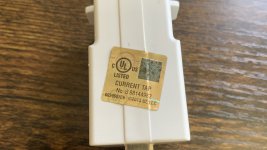I dont know where adapters are required to be listed, I have wondered this before.You are asking contractors to approve un-listed adapters
RE OP question #1 Although I would never recommend using this, the device might technically the requirements of 250.130(C)(4)
Code:
An equipment grounding conductor that is part of another
branch circuit that originates from the enclosure where
the branch circuit for the receptacle or branch circuit
originates
